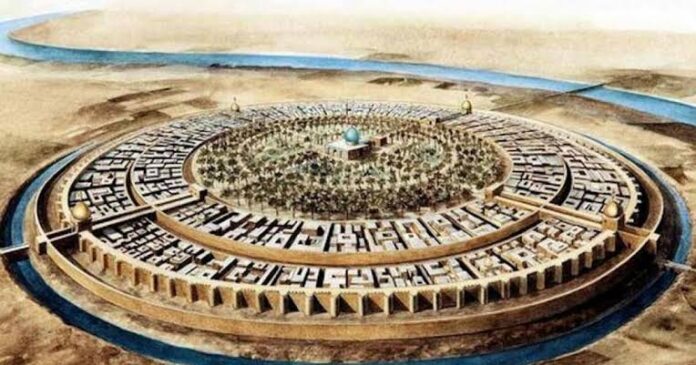The Walls of Benin: 4 times longer than the Great Wall of China
By Sakinat Musa Abubakar
The Kingdom of Benin, once a formidable power in West Africa, offers a tapestry of history that stretches across centuries, showcasing its extraordinary achievements in governance, trade, art, and urban planning. Located in what is now modern-day Nigeria, the kingdom flourished between the 13th and 19th centuries, with Benin City as its vibrant capital. While the famed Benin Bronzes often take the spotlight, the kingdom’s architectural wonder, the Walls of Benin, remains an equally remarkable testament to its ingenuity and grandeur.
Origins of a Legendary Kingdom
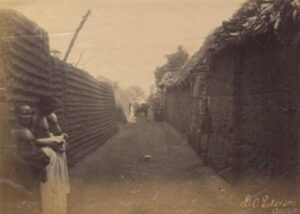
The Kingdom of Benin, also known as the Edo Kingdom, traces its origins to the Edo people and their ancient rulers, the Ogisos, or “Kings of the Sky.” According to oral traditions, the kingdom’s transformation began with Prince Ekaladerhan, who was banished from Benin and later became the revered king of Ife under the name Imadoduwa. His son, Oranmiyan, was invited to Benin to establish a new royal lineage. This marked the beginning of the oba dynasty, with Oranmiyan’s son, Eweka, ascending as the first oba of Benin.
The Walls of Benin: An Engineering Marvel
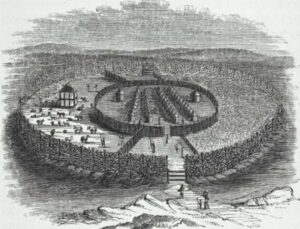
Constructed during the reign of Oba Ewuare the Great (1440–1480), the Walls of Benin are an unparalleled feat of engineering and a symbol of the kingdom’s might. Stretching an estimated 16,000 kilometres in total length and enclosing an area of 6,500 square kilometres, these earthworks were recognised by the Guinness Book of Records as the largest human-made structure before the mechanical age. The walls comprised a moat and rampart system, offering both defence and a representation of the kingdom’s power.
Excavated entirely by hand, the walls are believed to have required over 150 million hours of labour by the Edo people. They stood as a testament to Benin’s advanced urban planning and its ability to mobilise resources on an extraordinary scale.
A City of Beauty and Innovation
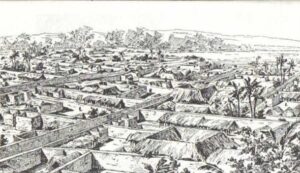
Benin City, often referred to as the “Great City of Benin,” was a marvel of urban design. Descriptions by 17th-century European visitors, such as Portuguese captain Lourenco Pinto, highlighted its grandeur, comparing it to Lisbon in size and sophistication. Streets were laid out in straight lines, adorned with galleries and homes built from polished red clay.
Ethno-mathematician Ron Eglash later discovered that the city was planned using fractal geometry, showcasing a deep understanding of symmetry and proportionality. At its heart was the oba’s court, from which 30 main streets radiated, each equipped with an underground drainage system.
Wealth and European Encounters
Benin’s wealth grew exponentially with the advent of trade with European powers, beginning with the Portuguese in the late 15th century. This exchange brought firearms and other goods in return for tropical products and, later, slaves.
However, the kingdom’s resistance to colonial subjugation culminated in the infamous British punitive expedition of 1897. Benin City was razed, and its treasures, including the Benin Bronzes, were looted. These artefacts, which depict the kingdom’s history and culture, remain central to ongoing debates about repatriation.
Preserving a Legacy
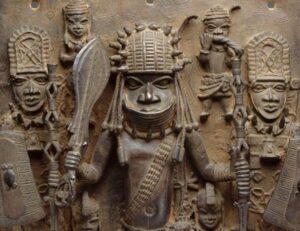
Despite the ravages of time and modernization, portions of the Walls of Benin endure. Recognised by the World Monuments Watch, they have been protected by law since 1961. Efforts are underway to conserve these remnants, ensuring that future generations can appreciate this monumental achievement.
The Walls of Benin, alongside the Benin Bronzes, serve as enduring symbols of African resilience, creativity, and cultural heritage. As calls for the return of looted artefacts grow louder, the kingdom’s story continues to inspire awe and admiration, reminding the world of the heights of African civilisation.
Written by Sakinat Musa Abubakar, Editor at Neptune Prime
Follow the Neptune Prime channel on WhatsApp:
Do you have breaking news, interview request, opinion, suggestion, or want your event covered? Email us at neptuneprime2233@gmail.com

